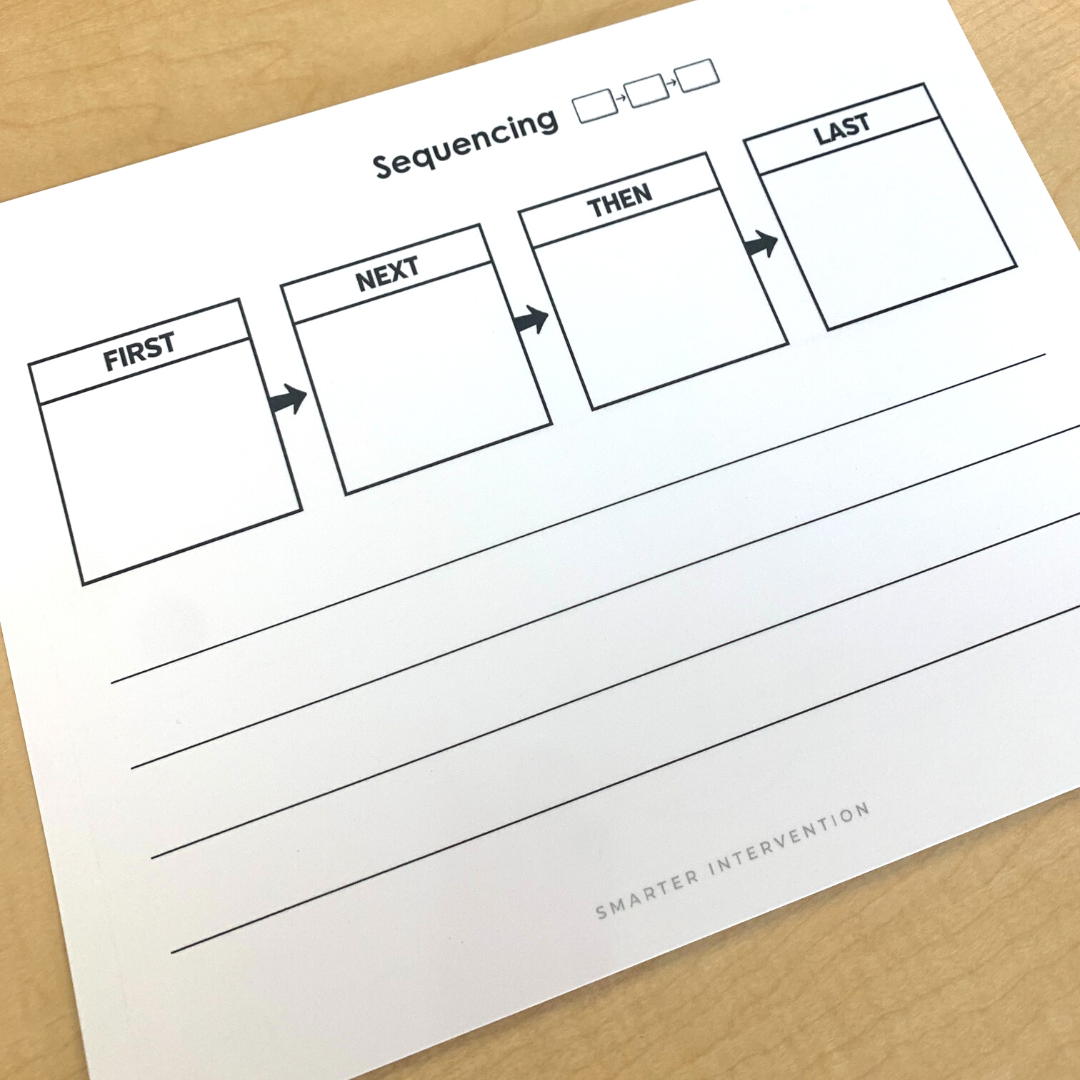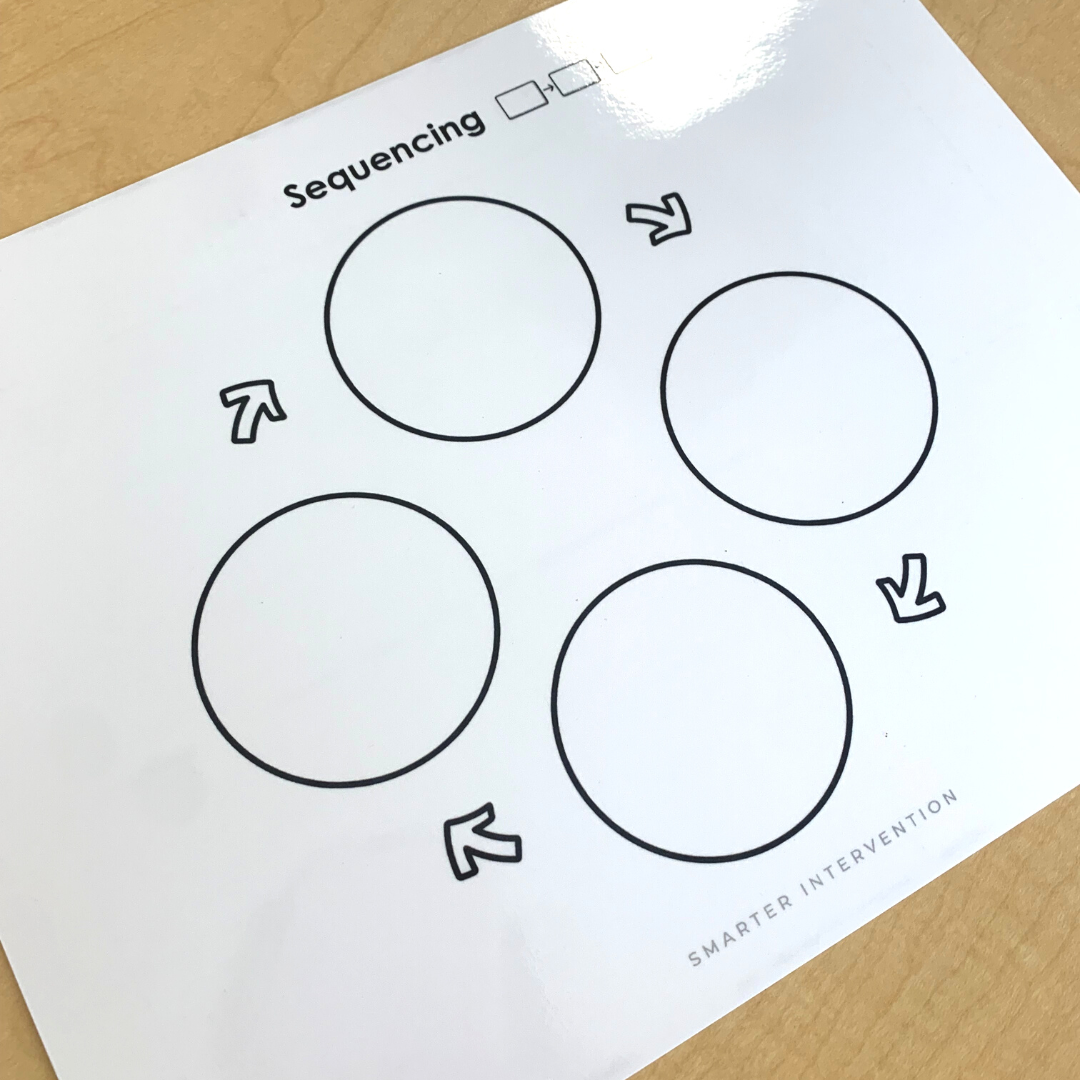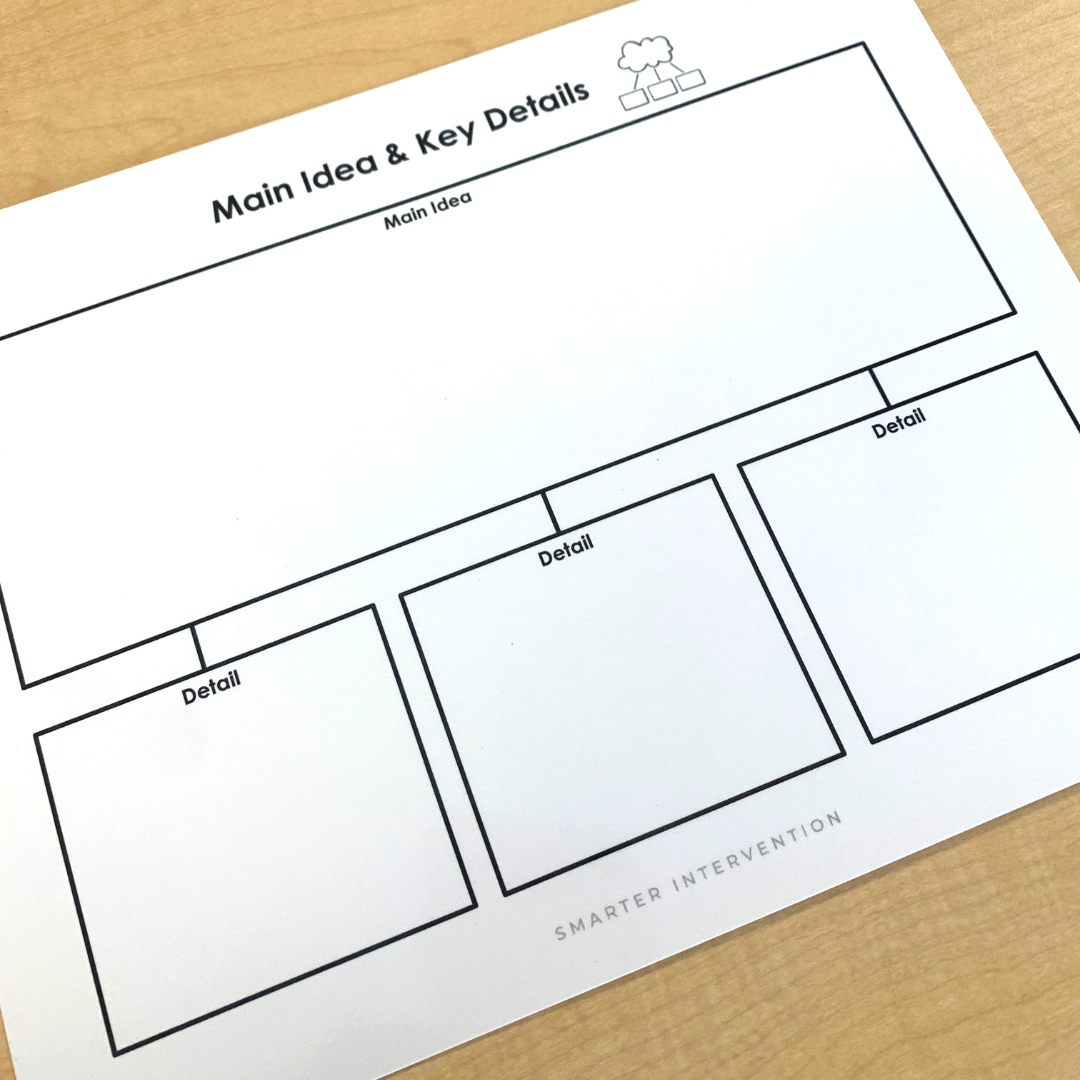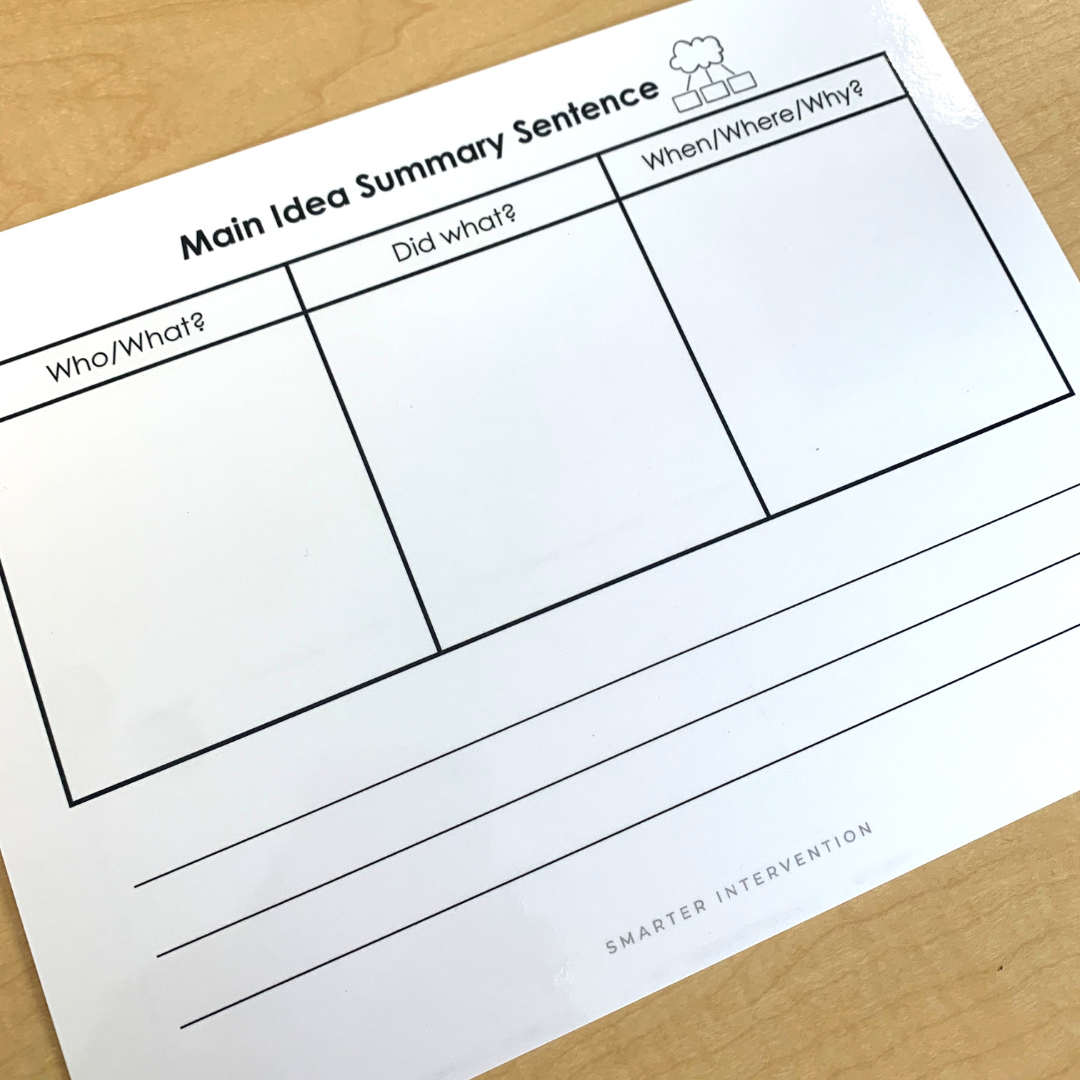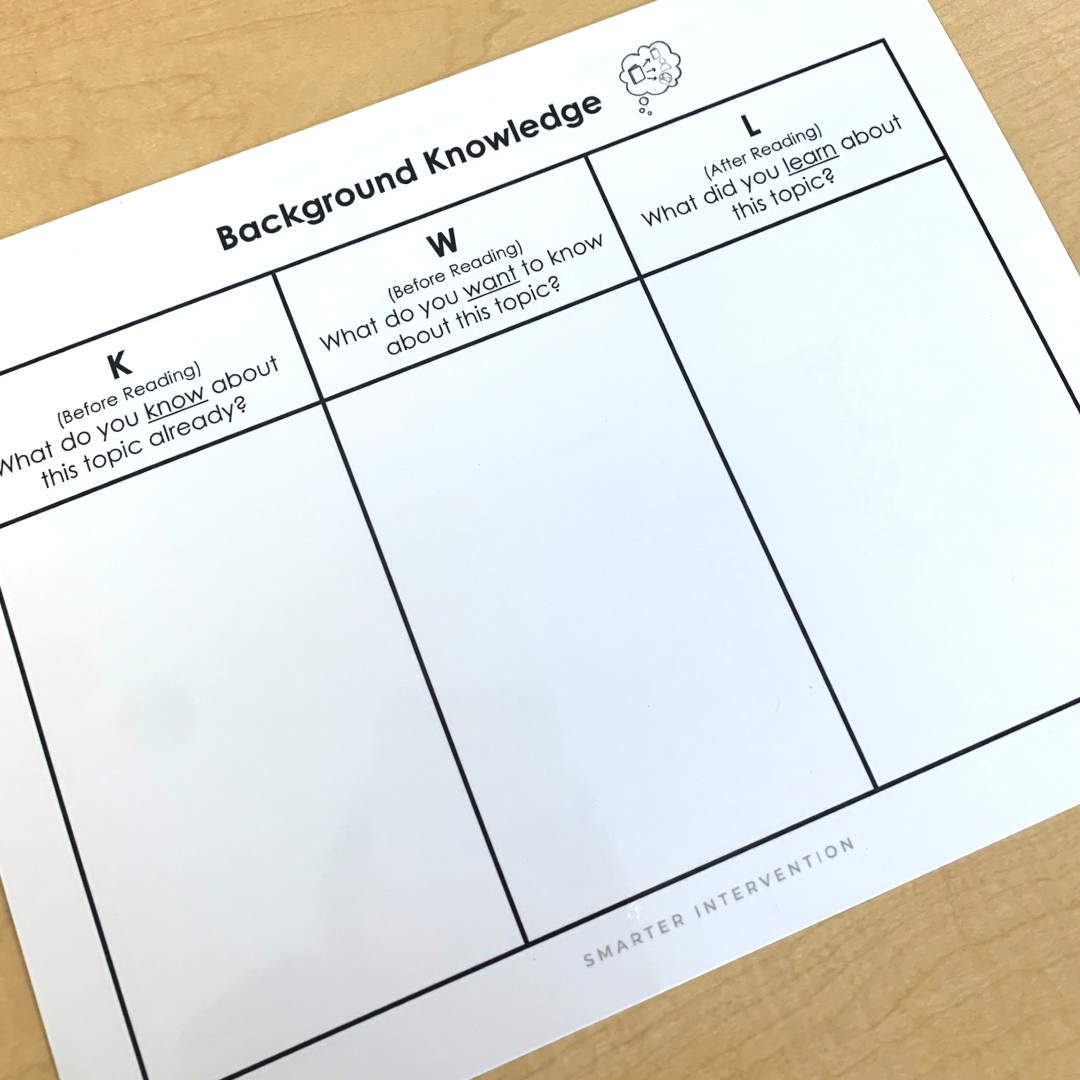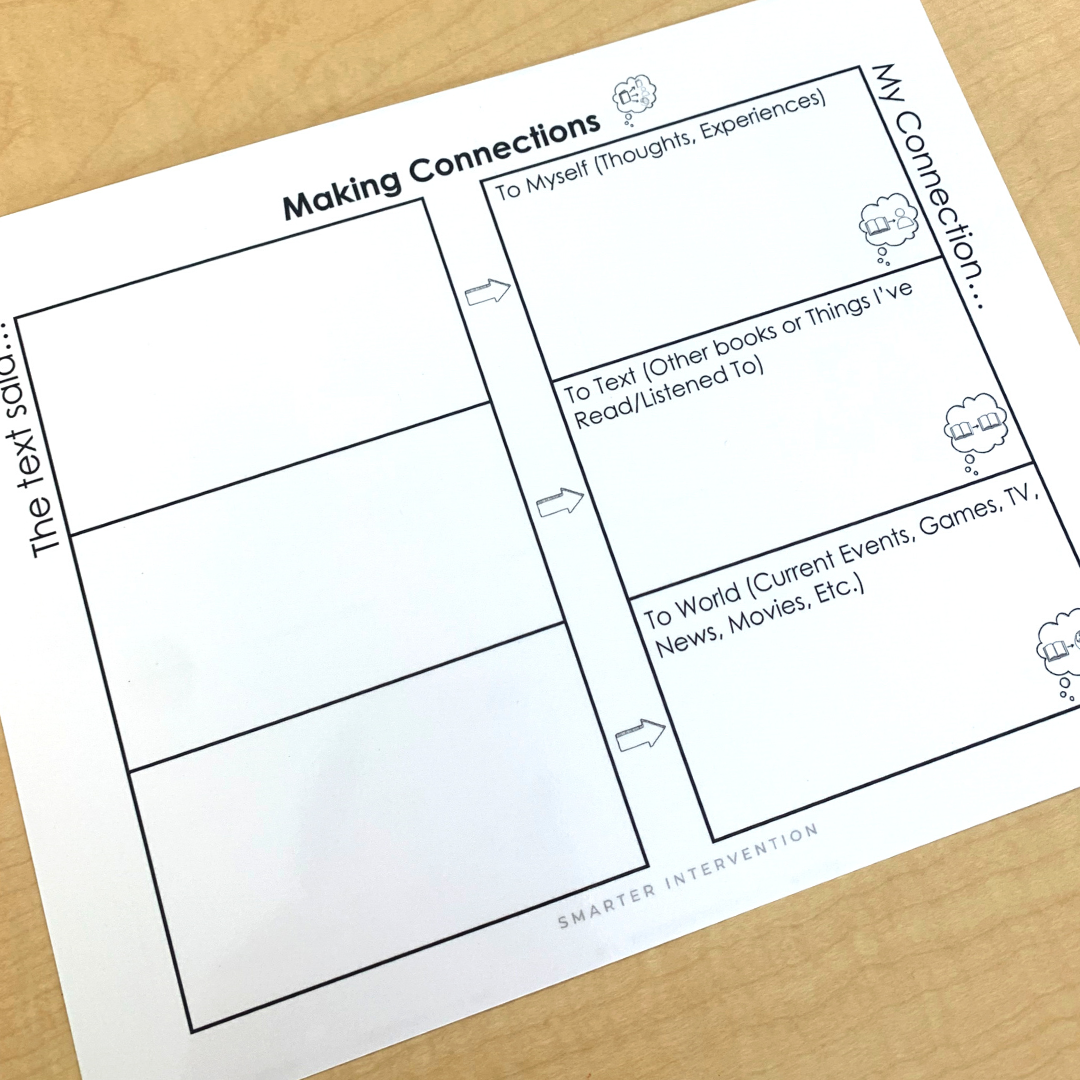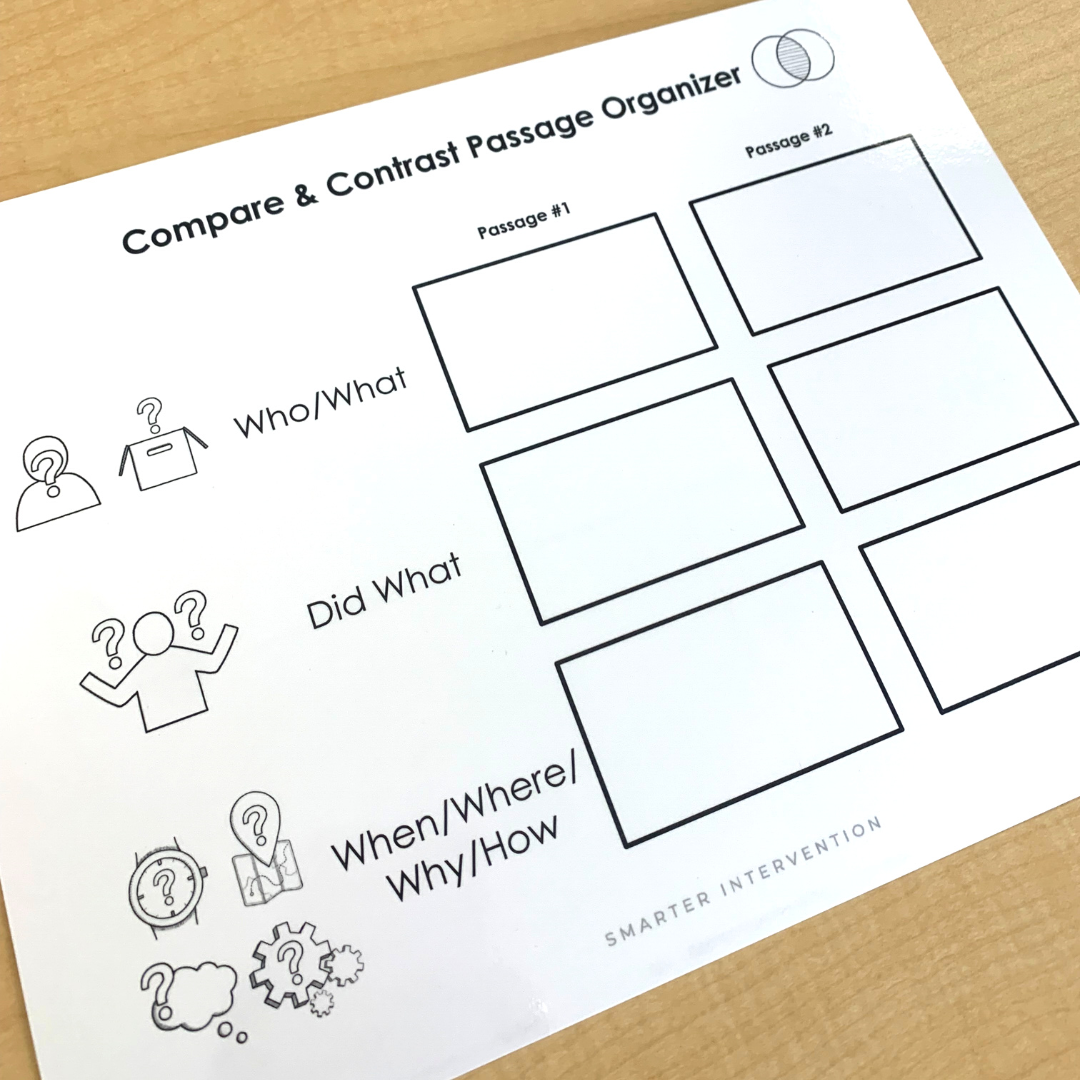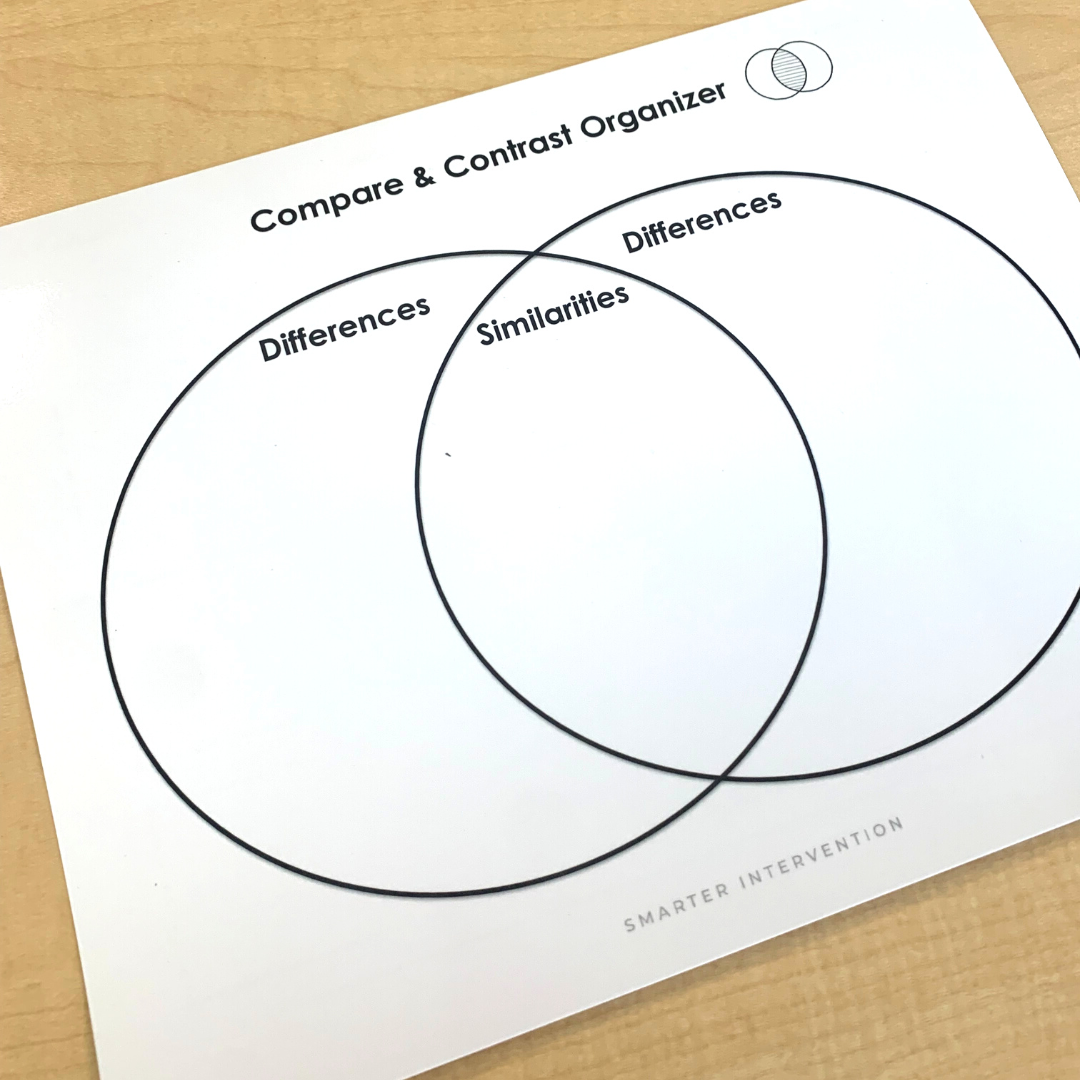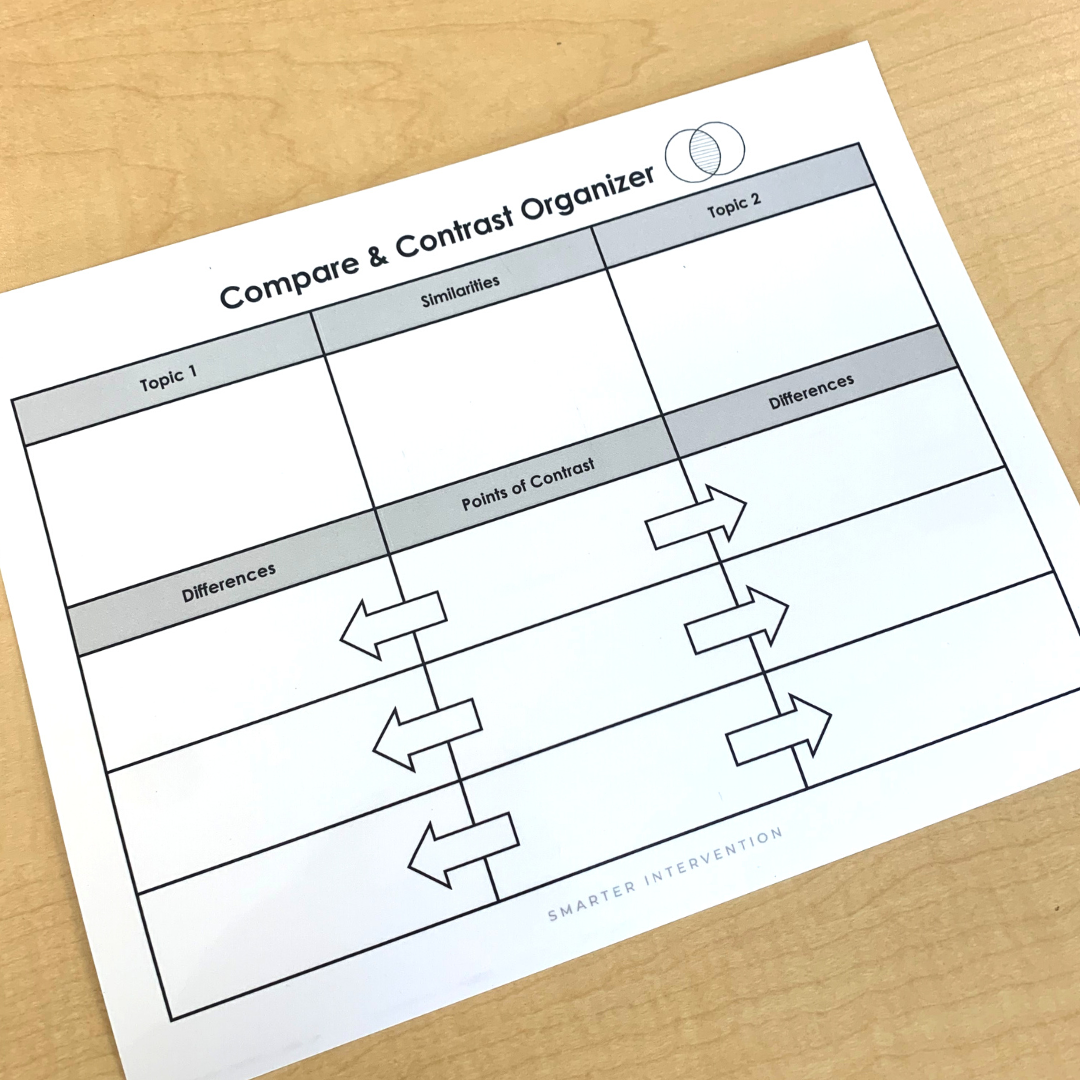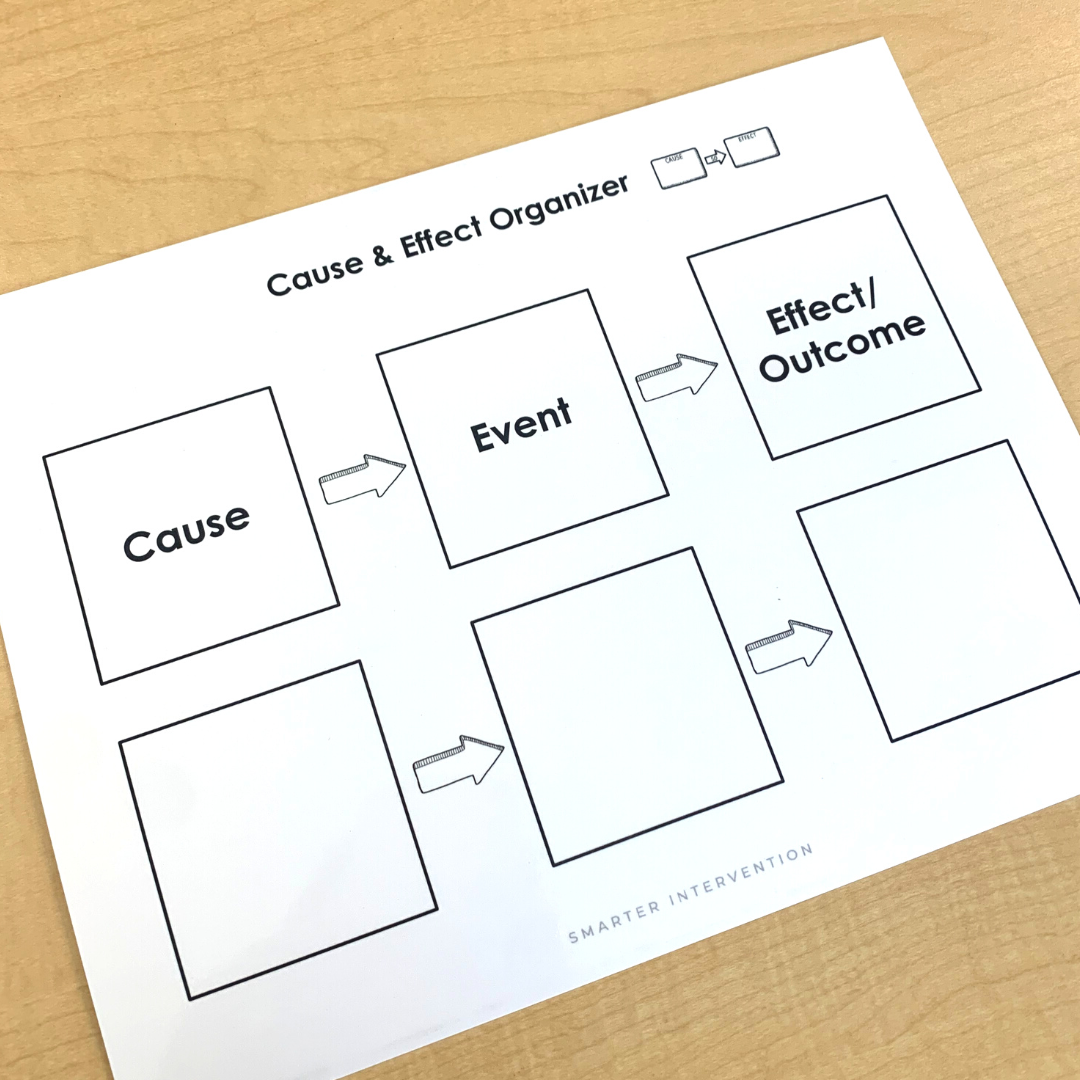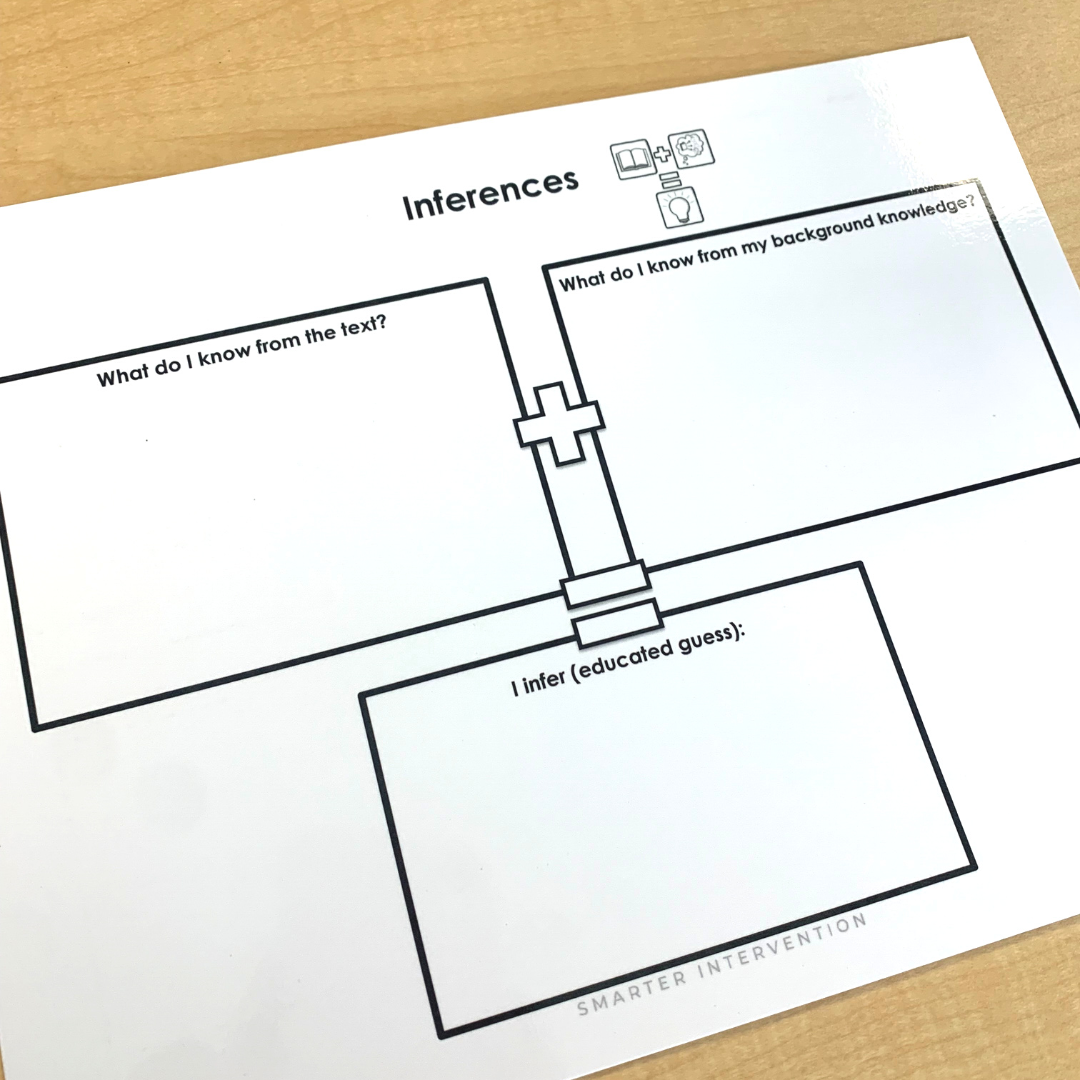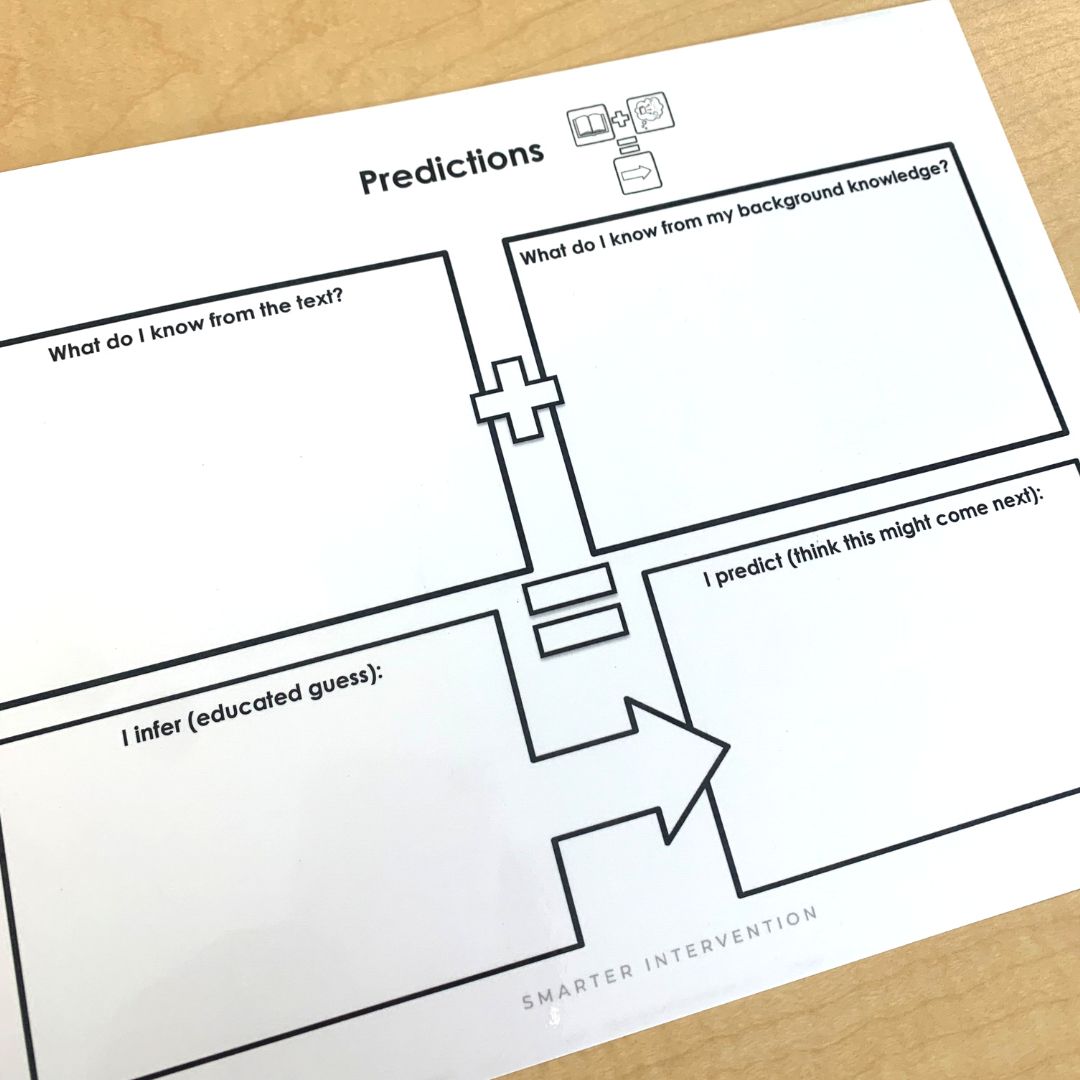How to Teach Comprehension Explicitly
You can't teach comprehension explicitly.
...at least, that's what we were told when we started in this field.
After working with hundreds of students, we realized that comprehension can and should be taught explicitly.
...and that teaching it doesn't need to be as hard as we once believed. It just relies on us recognizing one important detail before we jump in.
The first step in teaching comprehension explicitly…
…is recognizing that there are different styles of comprehension and that each requires different levels of processing.
The way we answer a direct recall question is going to be different than an inference. Finding the main idea requires a different thought process than creating connections between texts. The different types of comprehension generally fit into five different levels of cognitive processing.
Let’s break down these 5 levels of processing -
Level 1 - Direct Recall of Facts or Information
The first level of processing requires students to recall or find information in the text. Direct recall questions fit into this level of processing.
Direct recall questions often look like this…
Who said, "___________________?"
Where was _____________________?
When did _____________ take place?
To answer these questions, students either need to remember what was stated in the text or have the ability to find it when looking back.
How to teach students to answer direct recall questions -
As students read, they should be looking for the 5 Ws. They can highlight or underline the who/what, did what, when, where, and why details. This supports retention (as it draws their attention to the important details) and it makes finding information easier later.
Level 2 - Organizing Information
The second level in the levels of processing requires students to organize information. This includes main idea and sequencing questions. In order to answer these questions, students have to pull information from the text and be able to organize it in a certain way.
How to teach students to sequence information and find the main idea -
Sequencing requires students to put information in order. We support this in our lessons by helping students understand ordinal words like first, next, then, finally, prior to, following, after, etc. Graphic organizers are a great way to help students visually see and process the information they read about.
The main idea asks students to recognize the "big picture." To do this, they should find the "who/what," "did what," and "when/where/why/how" details (like they did in their level 1 processing) and put them together into a big-picture sentence.
Level 3 - Connecting the Information
Level 3 of the different levels of processing asks students to make connections, compare & contrast information, and identify cause & effect relationships.
How to teach students to build connections -
There are different types of connections students are expected to make to the text. These include connections to what they know, themselves, the world, or other texts.
A KWL chart is a great tool for students to be able to connect to their previous knowledge. This asks them to identify what they already know about a topic and what they want to know (or as we often say, what they think they need to know in order to understand the material) before reading. Then, after they read the passage, they can fill out the "L" section which asks them to identify what they learned.
Providing students with the sentence prompt, "This is similar to when I experienced…" helps them begin thinking about what they can compare the text to their own life. This sentence prompt can be changed to "this is similar to when…" to help them connect the text to a world event.
Finally, when connecting the text to another, students should look for similarities and differences. Again, graphic organizers are a great way to help them organize this information.
How to teach students to compare & contrast information -
We've all seen the classic Venn Diagram and we must say - it's a classic for a reason! Venn Diagrams are a great way for students to visually see how two things relate to one another. As passages and concepts get more advanced, additional graphic organizers can be used to support students' abilities to compare and contrast information. The sentence frame "______ and _____ are similar because _______. However, they are different because _______, _______, and _______." is another helpful organizational tool.
How to teach students to identify cause & effect relationships -
To identify a cause & effect relationship, students first need to be able to sequence information and find connections. This allows them to see how something is affected based on what happened prior to it.
You guessed it - graphic organizers are one of our favorite ways to support this!
Level 4 - Making a Leap with the Information
The fourth level of processing requires students to take the information they already had (background knowledge), plus the information in the passage, and make a leap away from the text. Questions at this level include making inferences and predictions.
How to teach students to make inferences and predictions -
To make inferences and predictions, students must be able to recall what the text said relating to the question and pair that with their own background knowledge about the subject. This then lets them come up with an educated guess as a response to the question.
These questions often have multiple appropriate answers as background knowledge is dependent on each student's life, personal experiences, and other factors.
Level 5 - Analyzing the Information
The fifth level of processing requires students to analyze information. At this level, they are looking for how the information aligns with their previous knowledge, how it adds to it, if there is information missing, etc.
It is at this level that they start to reflect on whether or not they agree with the information presented. They may consider the source of the information and if it is trustworthy or not. They can begin to recognize if the information is bringing up any emotions as they read it.
This level is advanced and some students may struggle here. It is important that we encourage level-five processing to help ensure that our students learn to be good stewards of information.
How to teach students to analyze information -
This level is very reflection-based. This is a great time to ask students to engage in conversation about texts or reflect and write about the information.
Some conversation starters or writing prompts include:
How does the information presented in ____________________ make me feel?
Does the information in ________________ match what I know? What is similar or different?
Does the information in _________________ offer a new perspective?
What lesson can I take away from _______________?
Pulling it all together…
So, again, when we think about comprehension, there are five different levels of processing. Each level requires students to think differently about the information presented to them, so it is important that we explicitly teach them how to understand what they are being asked and how to formulate an answer. Level 1 questions do not require level 5 answers. Likewise, level 4 questions are going to need more thought and explanation than level 2 questions. Graphic organizers are a great way to support this because they help prompt students and visually outline the necessary thought processes.
ALERT - FREE COMPREHENSION RESOURCE!
Grab a copy of our FREE Strucuted Comprehension Guide to support your instruction across all 5 levels of processing!
Where can I find these comprehension graphic organizers?
As we’ve said, graphic organizers are our favorite way to make comprehension instruction visual. They help students learn to process information at each of the different processing levels and are a great asset in our literacy lessons. Use the button below to grab your own copy of the graphic organizers shown above.
Check out this video to learn more about the 5 Levels of Comprehension.


